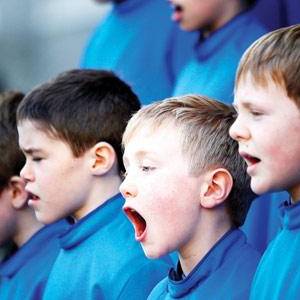
 N MY previous post, I wrote about the three main goals I have for new choristers during their first month of rehearsals:
N MY previous post, I wrote about the three main goals I have for new choristers during their first month of rehearsals:
FIRST : to ingrain a healthy vocal technique in the students and get rid of any unhealthy singing habits they have picked up
SECOND : to teach proficiency in solfege (only the diatonic notes of the scale
THIRD : to teach a proficiency in reading basic rhythms (eighth note through whole note, no dot) and their corresponding rests.
Today I would like to talk about the first goal.
I find it interesting to watch new students standing in the choir room immediately before we begin the first rehearsal. Each one is breathing from his diaphragm in the most normal and healthy way possible, but as soon as we begin to sing, the weirdest things begin to happen. Shoulders raise and tighten, the mouth opens and tightens, the jaw juts forward and the neck muscles begin to bulge, and all I asked of them was to take a breath. Nothing is ever easy! I imitate the children so they can see how silly they look. After the giggles have died down, I have them lie on the floor with one hand on top of their stomachs and ask them to breath normally. No deep breaths or shallow breaths, just breathe. Most of them are able to breathe normally in the prone position and feel the rise and fall of their stomachs. The key is getting each child to become aware of what happens during relaxed breathing. I ask them to feel what is happening to their stomachs? What is happening to the shoulders (their shoulders should simply be relaxed)? Ultimately, the only thing necessary is for the stomach to fill up with air like a balloon and then to exhale. Finally, I ask for them to stand up and replicate good breathing in a standing position. This does not happen automatically, but must be worked on for 5-10 minutes at the beginning of every rehearsal. I use a number of techniques employed by Frauke Hausemann, who was a legendary vocal coach at Westminster Choir College. I would recommend her book (co-authored with Wilhelm Ehmann) entitled Voice Building for Choirs. I have also found the RSCM Voice for Life to contain useful information regarding vocal training. If there are only two concepts you are able to instill in a child in the early stages regarding breathing, they would be 1) fill and empty the stomach with air just like a balloon (don’t use the chest) and 2) keep the shoulders down and relaxed.

